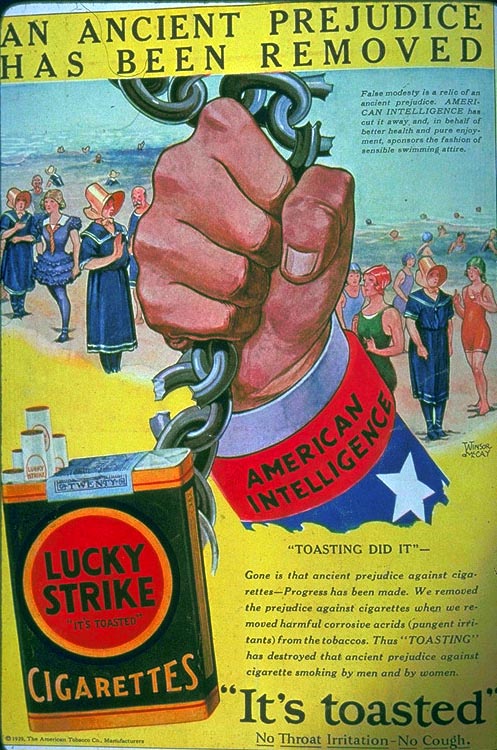
Interpret the problem- The problem is that people are ‘prejudice’ against cigarettes because they could eventually cause death. Another problem is that cigarettes contain harmful corrosive acids (pungent irritants that cause coughing and itching of the throat while smoking) in the tobacco, which obviously encourages people not to smoke.
Understand the creative brief- Since there was no way to prevent people from dying because of smoking cigarettes, they came up with an idea to take the corrosive acids out from the tobacco and say that it is safe to smoke cigarettes since there are no more corrosive acids, even though all it does is prevent the coughing and itching. They referred to the process of taking the irritants out as “toasting.”
Say it outright- The company that made this advertisement had a strategy of convincing people that the “American Intelligence” found a way to take the harmful corrosive acids out so that people could smoke without worrying about their health anymore.
Know your audience- Before this advertisement people thought were thinking that smoking is harmful for your health and that it has no advantages. The company that came up with this ad wants people to think that since they have taken out the harmful corrosive acids from the tobacco that is in cigarettes, then it will be safe to smoke cigarettes and people could enjoy smoking and relax.
Write your objective- Their objective is to encourage people to buy their cigarettes and for people to think that there is nothing wrong with smoking anymore because they have ‘toasted’ their tobacco.

